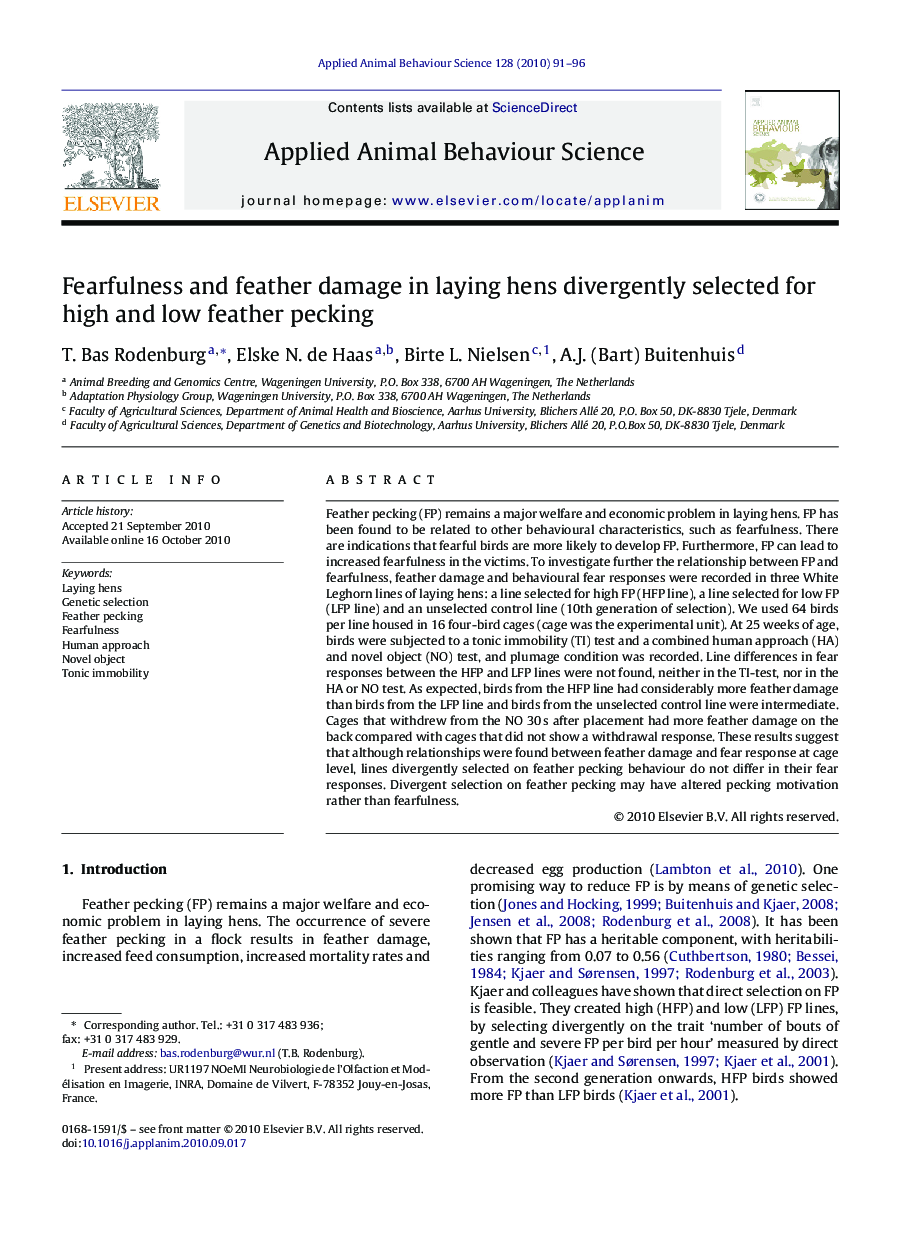| Article ID | Journal | Published Year | Pages | File Type |
|---|---|---|---|---|
| 4523252 | Applied Animal Behaviour Science | 2010 | 6 Pages |
Feather pecking (FP) remains a major welfare and economic problem in laying hens. FP has been found to be related to other behavioural characteristics, such as fearfulness. There are indications that fearful birds are more likely to develop FP. Furthermore, FP can lead to increased fearfulness in the victims. To investigate further the relationship between FP and fearfulness, feather damage and behavioural fear responses were recorded in three White Leghorn lines of laying hens: a line selected for high FP (HFP line), a line selected for low FP (LFP line) and an unselected control line (10th generation of selection). We used 64 birds per line housed in 16 four-bird cages (cage was the experimental unit). At 25 weeks of age, birds were subjected to a tonic immobility (TI) test and a combined human approach (HA) and novel object (NO) test, and plumage condition was recorded. Line differences in fear responses between the HFP and LFP lines were not found, neither in the TI-test, nor in the HA or NO test. As expected, birds from the HFP line had considerably more feather damage than birds from the LFP line and birds from the unselected control line were intermediate. Cages that withdrew from the NO 30 s after placement had more feather damage on the back compared with cages that did not show a withdrawal response. These results suggest that although relationships were found between feather damage and fear response at cage level, lines divergently selected on feather pecking behaviour do not differ in their fear responses. Divergent selection on feather pecking may have altered pecking motivation rather than fearfulness.
